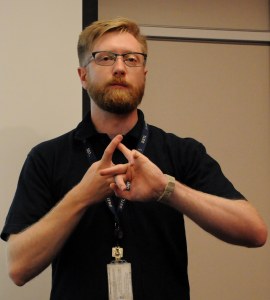An article posted on the Raspberry Pi Foundation website describes the work of two radio amateurs at the Surrey Space Centre in Guildford.
Dr Chris Bridges, 2E0OBC, leads the spacecraft On-Board Data Handling group in the Surrey Space Centre at the University of Surrey. He researches and teaches computer hardware and software to provide reliable computer processing in the harsh radiation environment of space. Chris is also an amateur radio enthusiast, with a passion for hacking almost any electronics for space and telling everyone that the sky is most definitely not the limit. He was involved at the beginning of the Astro Pi project back in 2014, since he has been working on numerous space flight projects involving Raspberry Pi devices and has been doing thermal and vacuum tests on them with his students.
Chris is working on the on-board computer for the STRaND2 and AAReST CubeSat missions, along with CalTech and the NASA Jet Propulsion Laboratory in the US. These CubeSat missions require the processing and detection of other CubeSats in flight for rendezvous and docking experiments, as well as for collision avoidance manoeuvres.
These kinds of CubeSats employ light detection and ranging technologies (LIDAR) as a way to measure distance to nearby objects in space. This works by illuminating the target with a laser beam and then analysing the reflected light to calculate how far away the target is.
Postgrad student and radio amateur Richard Duke M6TLE achieved this with a Raspberry Pi, an ordinary Microsoft Kinect and some custom Linux drivers that he rewrote himself. He now works at Surrey Space Centre as a software engineer.
Read the full Raspberry Pi article at https://www.raspberrypi.org/blog/compute-module-cubesats/
Detailed information on the work is in this paper on AAReST published in Acta Astronautica
https://www.academia.edu/16685779/Using_CubeSat_micro-satellite_technology_to_demonstrate_the_Autonomous_Assembly_of_a_Reconfigurable_Space_Telescope_AAReST_
and in this paper on STRaND2 given at the IEEE/AIAA Aerospace Conference.
https://www.academia.edu/3073489/STRaND-2_Visual_Inspection_Proximity_Operations_and_Nanosatellite_Docking
![]()
